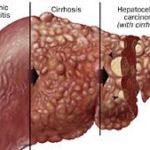
Viral hepatitis ranks as one of the top killers in our world today. It is many times more infectious than HIV and has a death toll that is equal to that of HIV/AIDS and Tuberculosis. Studies estimate that in 2014, TB caused about 1.5 million deaths, HIV/AIDS about 1.2 million deaths and Viral Hepatitis about 1.45 million deaths. Although Hepatitis is highly infectious, it is preventable with vaccines and it can be treated too.
What is Viral Hepatitis?
Viral hepatitis is basically the inflammation and subsequent death of the cells of the liver.
It is important to note that if you are infected with Viral Hepatitis, you may not feel the symptoms of the initial infection hence the damage to the liver continues until it leads to cirrhosis and cancer.

Generally speaking, people infected with Viral hepatitis, may present with vague body weakness or malaria-like/ flu-like symptoms. They may also present with dark urine, pale colored stool & jaundice (yellow eyes). There may also pain on the right upper quadrant of the abdomen that is made worse by movement.
There are 5 different forms of Hepatitis (A, B, C, D, E) and each form has a different way of getting into the body and hurting the body, however, most of the deaths from Hepatitis are from the HepB and HepC.
- Hep A(HAV) contracted through fecal-oral contamination (e.g. food made by an infected person). Sources of infection are daycares, restaurants etc. Symptoms may be mild.
- Hep B(HBV): contracted through needle sharing, sex, body piercing or occupational exposure. Symptoms are more severe.
- Hep C(HCV): contracted through needle sharing, blood transfusion (unscreened), sex, and body piercing. Symptoms are usually protracted. It is a common cause of chronic liver disease and liver cancer.
- Hep D (HDV): exists as a coinfection with Hep B (HBV). It is usually self-limited but may lead to chronic liver disease and hepatocellular cancer.
- Hep E (HEV): contracted through drinking water that is contaminated with feces. It is acute in nature and does not lead to chronic liver disease however mortality is higher in pregnant women and Hep E can be transmitted to the baby in utero.

Treatment
Includes rest, supportive care, public health notification of exposures, low-fat, high carbohydrate diet; high-quality proteins are important in the recovery phase.
All drugs that are metabolized by the liver like paracetamol, Tylenol, and statins are avoided.
Specific antiviral medications may be initiated by your doctor.
Exposure Prophylaxis
All close contacts of a person diagnosed with Hepatitis A ought to receive Hepatitis A vaccine immediately and in 6-12 months
All close contacts of a person diagnosed with Hepatitis B that has been exposed to blood, mucus membrane, broken skin, sex should get the HB immunoglobulin 0.06mL/kg IM within a period of 7 days. He/she should also get the Hep B vaccine immediately, at 1 month and at 6 months. This is usually given as an intramuscular injection in the deltoid muscle.
Sadly, there is no exposure prophylaxis for Hepatitis C.
There is the need for expansion of vaccination programs to prevent hepatitis infection especially the prevention of mother-to-child transmission of hepatitis B.

There is also a need to increase awareness of this deadly disease so it can be detected early and treated to prevent chronic liver disease and cancer.
Let’s spread the news!